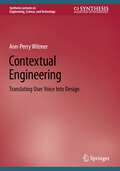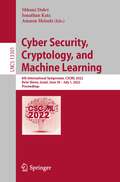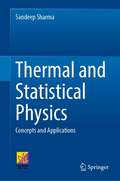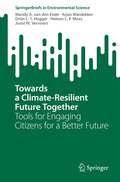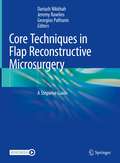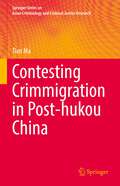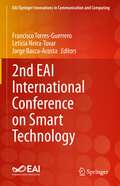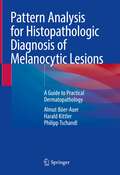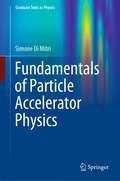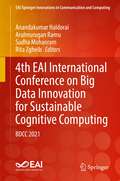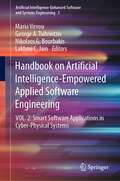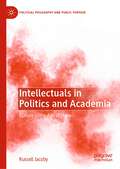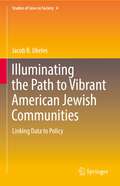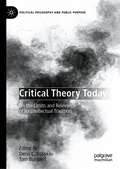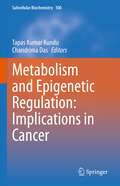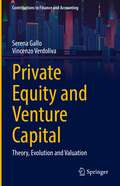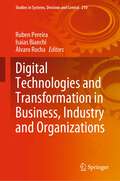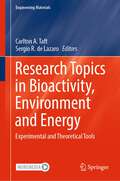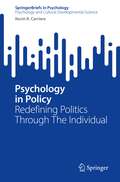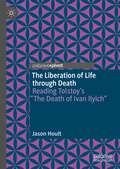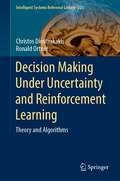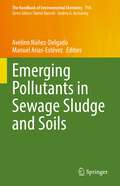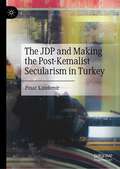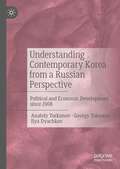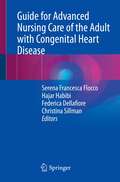- Table View
- List View
Contextual Engineering: Translating User Voice Into Design (Synthesis Lectures on Engineering, Science, and Technology)
by Ann-Perry WitmerThis book shows readers a new way of thinking about the engineering design process, as well as how to expand their understanding of the role of technical designers in society, whether working with international communities or user populations from their own hometown. As readers build an understanding of Contextual Engineering, this book will challenge them to think about the applicability of the concept more broadly, not only in terms of technical design but in personal and professional interactions with others as well. At the same time, readers will learn techniques to explore their own predispositions and the biases they may not be aware they have, equipping them to interact with others more impartially. This self-reflection process also assists the designer in working with and accepting the uncertainty that is inherent in exploring context.
Cyber Security, Cryptology, and Machine Learning: 6th International Symposium, CSCML 2022, Be'er Sheva, Israel, June 30 – July 1, 2022, Proceedings (Lecture Notes in Computer Science #13301)
by Shlomi Dolev Jonathan Katz Amnon MeiselsThis book constitutes the refereed proceedings of the 6th International Symposium on Cyber Security Cryptography and Machine Learning, CSCML 2022, held in Be'er Sheva, Israel, in June - July 2022. The 24 full and 11 short papers presented together with a keynote paper in this volume were carefully reviewed and selected from 53 submissions. They deal with the theory, design, analysis, implementation, or application of cyber security, cryptography and machine learning systems and networks, and conceptually innovative topics in these research areas.
Thermal and Statistical Physics: Concepts and Applications
by Sandeep SharmaThis textbook presents the fundamental concepts and theories in thermal physics and elementary statistical mechanics in a very simple, systematic and comprehensive way. This book is written in a way that it presents the topics in a holistic manner with end-of-chapter exercises and examples where concepts are supported by numerous solved examples and multiple-choice questions to aid self-learning. The textbook also contains illustrated diagrams for better understanding of the concepts. The book will benefit students who are taking introductory courses in thermal physics, thermodynamics and statistical mechanics.
Towards a Climate-Resilient Future Together: Tools for Engaging Citizens for a Better Future (SpringerBriefs in Environmental Science)
by Mandy A. van den Ende Arjan Wardekker Dries L.T. Hegger Heleen L.P. Mees Joost M. VervoortAlthough many local authorities underline the important role of citizens in climate adaptation, many experience difficulties with organizing citizen participation in a way that is meaningful to both citizens and policymakers. Climate change is for many simply not a top priority. Besides, the future is often rather abstract to people, citizens in particular. We argue that practical tools are needed to help citizens structure the process of thinking about and designing the future of their living environment under the impacts of climate change. The toolbox Towards a climate-resilient future together offers practical foresight methods and tools for organizing citizen participation in the process of building climate-resilient futures. It provides an overview of the state the art of and hands-on guidance for executing participatory foresight methods and showcases some of the lessons learned from several international research programs on citizen engagement. In doing so, the toolbox can assist practitioners, students and academics concerned with the question of how local communities in urban and rural areas could adapt to climate change impacts and become more resilient in the future. It is suitable for readers without any experience in citizen participation and/or foresight, while more experienced readers will find innovative combinations of methods and tools that are unique within the field of citizen participation and foresight..
Core Techniques in Flap Reconstructive Microsurgery: A Stepwise Guide
by Dariush Nikkhah Jeremy Rawlins Georgios PafitanisThis book provides a practical, step-by-step guidance on modern workhorse flaps for plastic and reconstructive surgeons in training or in their early career. The 50 chapters cover everything from surgical fundamentals to preconditions of microsurgical techniques, but also covers pre-operative planning, steps of microsurgical dissection and management of complications in a straightforward, explanatory style, and are supplemented by over 600 clinical illustrations and cadaveric images. Further videos demonstrations with pertinent steps in flap dissection, anatomical nomenclature and long-term outcomes are also demonstrated. For each flap a detailed discussion of key papers concerning its origin, pitfalls, technical refinements and tips for success are also included. Thanks to specific notes on common reconstructive challenges and complications, this book offers a valuable reference tool and would be unquestionably an integral reference guide for every surgeon interested in reconstructive microsurgical techniques, especially during their early microsurgical career.
Contesting Crimmigration in Post-hukou China (Springer Series on Asian Criminology and Criminal Justice Research)
by Tian MaThis book focuses on the criminalization trend and process regarding the internal migration in contemporary China from the perspective Law-in-Action. In Chinese society today, internal migrants are commonly perceived as criminals. Crimmigration, a global term that communicated the convergence of the criminal legal system and the immigration enforcement system, manifest itself in China’s hukou-based (also known as the household registration system) criminal legal system. How hukou has been constructed into the concept of Crimmigration in China strikes at the core of the ultimate questions of this book: who is being criminalized, how does the political-economic-cultural institution known as ‘hukou’ shape the criminal justice process, and how has the role of hukou changed over time in the ever-changing process?Drawing on interviews with police, prosecutors, criminal lawyers & judges, prison staff and migrant leaders in Yangtze River Delta, China, this book reflects on a historical development on hukou and its function in social control. Each chapter contributes to an extended analysis of pragmatic aspects of decision-making moments in the criminal justice system. This book will appeal to criminology researchers and students with in interest in law, politics, migration, and citizenship in contemporary China.
2nd EAI International Conference on Smart Technology (EAI/Springer Innovations in Communication and Computing)
by Francisco Torres-Guerrero Leticia Neira-Tovar Jorge Bacca-AcostaThis book presents the proceedings of 2nd EAI International Conference on Smart Technology (MTYMEX), which took place April 27th, 2021, online and in Monterrey, Mexico. MTYMEX is an international conference aimed at demonstrating the potential of new applications for the Internet in the future. The authors offer perspectives on research on smart technologies in society, including the results of research projects on virtual reality, blockchain, artificial intelligence, and smart cities. The book offers examples of applications with smart technologies in different knowledge areas. The conference brings together the academic, research and private sectors working on applications and smart devices for e-health and smart cities.
Pattern Analysis for Histopathologic Diagnosis of Melanocytic Lesions: A Guide to Practical Dermatopathology
by Almut Böer-Auer Harald Kittler Philipp TschandlPattern analysis is a powerful method that changed dermatopathology, nowadays an indispensable tool in the diagnostic workup of inflammatory and neoplastic lesions. The diagnosis of melanocytic lesions can also be mastered by pattern analysis, which is the link between pathology, dermatoscopy, and clinical dermatology and supports the integration of all views. The histopathologic diagnosis of melanocytic lesions can be challenging for novices and experts alike. While classifications of melanocytic lesions come and go, pattern analysis is timeless; it can be assigned to any classification, current or future, and provides a framework that allows to address complex and uncertain cases in a repeatable manner. While uncertainty cannot be totally eliminated, pattern analysis helps to express this uncertainty in a meaningful way. Written by expert dermatopathologists with experience in dermatoscopy, this book is dedicated to young colleagues and to those who have not yet settled on one of the competing schools of thought; it is intended as a practical guide to help making correct observations, to describe them with a well-defined terminology, and to yield critical decisions in the face of incomplete or conflicting information. The illustrations contained in the volume are all original pictures in high-quality and full-color: reproductions of histopatological cuts in low and high magnification will assist pathologists, dermatologists, and dermatopathologists in interpreting histological slides of melanocytic skin lesions.
Fundamentals of Particle Accelerator Physics (Graduate Texts in Physics)
by Simone Di MitriThis book offers a concise and coherent introduction to accelerator physics and technology at the fundamental level but still in connection to advanced applications ranging from high-energy colliders to most advanced light sources, i.e., Compton sources, storage rings and free-electron lasers. The book is targeted at accelerator physics students at both undergraduate and graduate levels, but also of interest also to Ph.D. students and senior scientists not specialized in beam physics and accelerator design, or at the beginning of their career in particle accelerators.The book introduces readers to particle accelerators in a logical and sequential manner, with paragraphs devoted to highlight the physical meaning of the presented topics, providing a solid link to experimental results, with a simple but rigorous mathematical approach. In particular, the book will turn out to be self-consistent, including for example basics of Special Relativity and Statistical Mechanics for accelerators. Mathematical derivations of the most important expressions and theorems are given in a rigorous manner, but with simple and immediate demonstration where possible.The understanding gained by a systematic study of the book will offer students the possibility to further specialize their knowledge through the wide and up-to-date bibliography reported. Both theoretical and experimental items are presented with reference to the most recent achievements in colliders and light sources. The author draws on his almost 20-years long experience in the design, commissioning and operation of accelerator facilities as well as on his 10-years long teaching experience about particle accelerators at the University of Trieste, Department of Engineering and of Physics, as well as at international schools on accelerator physics.
4th EAI International Conference on Big Data Innovation for Sustainable Cognitive Computing: BDCC 2021 (EAI/Springer Innovations in Communication and Computing)
by Anandakumar Haldorai Arulmurugan Ramu Sudha Mohanram Rita ZgheibThis book features the proceedings of the 4th EAI International Conference on Big Data Innovation for Sustainable Cognitive Computing (BDCC 2021). The papers feature detail on cognitive computing and its self-learning systems that use data mining, pattern recognition and natural language processing (NLP) to mirror the way the human brain works. This international conference focuses on technologies from knowledge representation techniques and natural language processing algorithms to dynamic learning approaches. Topics covered include Data Science for Cognitive Analysis, Real-Time Ubiquitous Data Science, Platform for Privacy Preserving Data Science, and Internet-Based Cognitive Platform.
Handbook on Artificial Intelligence-Empowered Applied Software Engineering: VOL.2: Smart Software Applications in Cyber-Physical Systems (Artificial Intelligence-Enhanced Software and Systems Engineering #3)
by Maria Virvou George A. Tsihrintzis Nikolaos G. Bourbakis Lakhmi C. JainEvolving technological advancements in big data, smartphone and mobile software applications, the Internet of Things and a vast range of application areas in all sorts of human activities and professions, lead current research toward the efficient incorporation of artificial intelligence enhancements into software and the empowerment of software with artificial intelligence. The book at hand, devoted to Smart Software Applications in Cyber-Physical Systems, constitutes the second volume of a two-volume Handbook on Artificial Intelligence-empowered Applied Software Engineering. Topics include very significant advances in Smart Software Applications in (i) Scientific Document Processing, (ii) Enterprise Modeling, (iii) Education, (iv) Health care and Medicine, and (v) Infrastructure Monitoring. Professors, researchers, scientists, engineers, and students in artificial intelligence, software engineering, and computer science-related disciplines are expected to benefit from it, along with interested readers from other disciplines.
Intellectuals in Politics and Academia: Culture in the Age of Hype (Political Philosophy and Public Purpose)
by Russell JacobyThis book addresses the fate of intellectuals in modern culture and politics. Russell Jacoby’s seminal The Last Intellectuals: American Culture in the Age of Academe (1987, 2000) introduced the term “public intellectual” and gave rise to heated controversy. Here Jacoby assesses contemporary public intellectuals, their profound failings and limited achievements. The book includes biting appraisals of well-known intellectuals, such as Noam Chomsky, Hannah Arendt, and Bernard-Henri Lévy, as well as interventions on violence, utopia and multiculturalism.
Illuminating the Path to Vibrant American Jewish Communities: Linking Data to Policy (Studies of Jews in Society #4)
by Jacob B. UkelesThis book argues that the way to ensure that American Jewish life flourishes is to create vibrant local communities and that the ability to thrive will be won or lost in the trenches of each locality. For every generalization about the Jews of America, one can say, “maybe, but it depends where.” In the United States, Jewish life is up close and personal where local variations on national themes make a huge difference. The author presents case studies using in-depth analysis of data from nine Jewish community studies to illuminate eleven critical American Jewish policy issues. The analysis is used to formulate a range of policy options for different types of communities. This book is for anyone who cares about the future of American Jewry. It should be of particular interest to the lay leaders and professionals who play a role in Jewish nonprofits. It is also of great interest to researchers and students of Jewish studies and Jewish communal service.
Critical Theory Today: On the Limits and Relevance of an Intellectual Tradition (Political Philosophy and Public Purpose)
by Denis C. Bosseau Tom BunyardThis book considers whether critical theory is up to the task of addressing our contemporary crises, including the question of ‘post-truth’ discourse, psycho-social pathologies, the rise of right-wing populism, the Covid-19 pandemic, the anticolonial deficit in critical theory, and the neo-liberal management of the academy. The contributors offer a series of timely and complex reflections on the nature of critical theory, its role in contemporary society, and its various developments since the early twentieth century. In doing so, they analyse a variety of contemporary issues that, through critical reflection, can help us to navigate these problems. This volume seeks to highlight problems and possibilities within this field of thought, and endeavours to contribute towards reconsidering its capabilities and relevance.
Metabolism and Epigenetic Regulation: Implications in Cancer (Subcellular Biochemistry #100)
by Tapas Kumar Kundu Chandrima DasMetabolic programs of individuals are key determinants for disease susceptibility and immune response. This book, edited by experts in the field, summarizes epigenetic signaling pathways that regulate metabolic programs associated with cancer and cancer-related secondary diseases.The first part of the book highlights key metabolic pathways that are implicated in cancer and provides a comprehensive overview on the carbohydrate, protein, lipid, amino- and nucleic acid metabolic pathways that are deregulated in cancer. Special attention is paid to the altered tumor micro-environment that is influenced by the metabolic milieu. Furthermore, the fundamental relationship between the cellular metabolic environment and cell death-mediated autophagy is discussed.The second part of the book covers our understanding of the fundamental epigenetic regulations that are implicated in controlling the metabolic programs in cancer cells. Many aspects of epigenetic regulation of non-coding RNAs as well as DNA/RNA methylation, which influencing metabolic homeostasis in cancer, are discussed in detail. Special emphasis is placed on the epigenetic regulation of the amino acid, glucose/carbohydrate metabolism and epigenetic regulation during hypoxia and its connection to cancer.Last but not least, the third part of the book covers small molecule modulators of histone modifying enzymes, which can be used as therapeutic tools. The readers learn about the cross-talk between epigenetics and immunometabolims, as well as the epigenetic regulation of oncometabolites to combat cancer. Given its scope, the book will appeal to a broad readership interested in epigenetic, cancer and metabolic research.
Private Equity and Venture Capital: Theory, Evolution and Valuation (Contributions to Finance and Accounting)
by Serena Gallo Vincenzo VerdolivaThe terms venture capital and private equity may differ across countries. This book discusses venture capital not only as risk capital toward unlisted companies with the aim to enhance the investee firm, but also analyses broader forms of entrepreneurial investment: from early stage financing to buyout and turnaround transaction. This book is divided into four sections. The first section aims to shed light on the terminology and offers a comparison between private equity/venture capital, and the traditional banking sector as financing sources. The second section details the differences between private equity and venture capital transactions on the basis of firm life cycle, and summarizes the main characteristics of both private equity and venture capital investors and investee firms. The third section illustrates the evolution of the private equity and venture capital industry before and after the financial crisis by looking at three fundamental aspects: fundraising, investment and divestment, all in terms of volume and trends. The last section discusses the basic elements of corporate valuation applied to private equity and venture capital industry, with some practical examples.
Digital Technologies and Transformation in Business, Industry and Organizations (Studies in Systems, Decision and Control #210)
by Ruben Pereira Isaias Bianchi Álvaro RochaThis book intends to provide a reference manual to assist professionals and academics on further insights regarding: the impact of digital technologies in business, how to implement digital technologies, solutions for specific digital technologies barriers, and much more. Digital transformation marks a rethinking of how an organization uses technology, people, and processes in pursuit of new business models and new revenue streams, driven by changes in customer expectations around products and services. For many enterprises that build traditional goods, this means building digital products, such as a mobile applications or an ecommerce platform. To do so, they must use and integrate digital technologies. The pace of change is increasing. Organizations need to adapt or risk to disappear under innovators entrance in the market. With new digital technologies growing in an exponential rate in the last few decades, organizations are facing even more complex contexts. Managers are now pressed to take efficient decisions. The editors encourage the use of research methods such as Systematic Literature Review (SLR) or Multivocal Literature Review (MLR) (since many new technologies are usually evolved first by practitioners). However, other research methods can also be appreciated as case studies or experiments.
Research Topics in Bioactivity, Environment and Energy: Experimental and Theoretical Tools (Engineering Materials)
by Carlton A. Taft Sergio R. de LazaroThis book covers edge-point applications in science and engineering. The chapters discuss the functional properties of advanced engineering materials and biomolecules, improving the comprehension of their chemical physical properties and potential for new technological and medicinal applications. The book presents a small number of experimental techniques and computational simulation models from basic concepts of classical/quantum mechanics, physics, chemistry, biology, statistical methods that can predict important applications and properties of these materials/biomolecules. The content shows how improving design of new systems helps in addressing future world problems (health, energy, food, environment, transportation, housing, clothing, etc.), i.e., almost every aspects of our daily lives.
Psychology in Policy: Redefining Politics Through The Individual (SpringerBriefs in Psychology)
by Kevin R. CarriereThis book takes an insider perspective of the psychological issues of creating policy. Instead of considering what the products of policy are - often the case in psychological and political science work - this book examines the individual processes present in proposing and engaging with policy. The individual who engages with the policy and its meanings, the individual who resists the policy through conformity, and the individual who writes the policy for their own ideological purposes are all political actors in a psychological system. This book puts forward a cultural political psychology as the psychological study of the process of values, policy, and power dynamics. Through exploring public policy through private policy generation and individual interaction, this book pushes theoretical understandings of policy and activism in new ways. Centering on an individual’s own values in facing various policy restrictions from governments, parents, or peers, the importance of examining collective actions and also collective inactions of individuals is noted and expanded on in the text. The book provides applications of its arguments through examining the processes of unionization and actualized democracy. It seeks to point out new research avenues, including the hypogeneralization of values, one’s exclusion through activism, and everyday revolutions. This book addresses the centrality of the individual and meaning-making systems when considering where policy, politics, and psychology intersect. This book is primarily addressed to psychologists and political scientists interested in how to make change in public policy. While the experiences within the book are United States-centric, the thoughts and theories behind them are meant to be applicable to a wide variety of political systems. As there is currently very little literature on the topic, this book seeks to fill the gap and offer concise information on such an important dimension of cultural and political psychology. It is expected that the book will be of great interest for researchers in these areas, as well as for graduate-level students. In particular, this book will be relevant to researchers and students working on political psychology, public policy, development, community psychology, social representations, semiotics, activism, and social movements, to name a few.
The Liberation of Life through Death: Reading Tolstoy’s “The Death of Ivan Ilyich”
by Jason HoultThis book undertakes to show how the exercise of reading Tolstoy’s “The Death of Ivan Ilyich” involves articulating for ourselves, as readers, what it means to liberate life through death. What Tolstoy’s short story shows us, the author argues, is that life can be truly liberated through death only when we see that death is neither a supernatural event nor a natural end but involves a work of love. In Part 1 of his study, the author addresses the common assumptions that give rise to the idea that religious and secular views of life and death are opposed in modernity. He also examines the history of values that Tolstoy’s story embodies. In Part 2, he analyses the life and death of Ivan Ilyich in order to show that the values that are embedded in Tolstoy’s story are at once religious and secular.
Decision Making Under Uncertainty and Reinforcement Learning: Theory and Algorithms (Intelligent Systems Reference Library #223)
by Christos Dimitrakakis Ronald OrtnerThis book presents recent research in decision making under uncertainty, in particular reinforcement learning and learning with expert advice. The core elements of decision theory, Markov decision processes and reinforcement learning have not been previously collected in a concise volume. Our aim with this book was to provide a solid theoretical foundation with elementary proofs of the most important theorems in the field, all collected in one place, and not typically found in introductory textbooks. This book is addressed to graduate students that are interested in statistical decision making under uncertainty and the foundations of reinforcement learning.
Emerging Pollutants in Sewage Sludge and Soils (The Handbook of Environmental Chemistry #114)
by Avelino Núñez-Delgado Manuel Arias-EstévezThis book provides an authoritative overview of emerging pollutants in sewage sludge and soils. It traces the latest research and new trends on the characterization, removal and treatment of such pollutants in urban and industrial sewage sludge and soils. The book covers topics such as antibiotic resistance, fate and environmental impact of contaminants of emerging concern, environmental transmission of human pathogenic viruses and their effect on soil, and the repercussion of various emerging pollutants on biodiversity. It also offers a case study of the epidemiology-based surveillance of SARS-CoV-2 in wastewater and sludge. The book appeals not only to researchers and professionals working with emerging contaminants, but also to policy makers and a broader audience interested in learning more about the effects of these contaminants in human and environmental health.
The JDP and Making the Post-Kemalist Secularism in Turkey
by Pinar KandemirThis book is an analytical study of secularism in contemporary Turkey by tracing its historical trajectory within the context of political transformation in a country that experienced a social and cultural rupture in its formative years. Its principal focus is on the policies and practices of the current ruling party, the Justice and Development Party (JDP), which has influenced the process of change, evolution, and transformation with regard to secularism and state policies toward religion. Following its foundation in 2001, the JDP developed a unique approach to conceptualising the relationship between state and religion. In contrast to other mainstream parties and political positions both in the past and present, it offers an alternative vision and model to that of inherited Kemalist secularism, as formulated by Mustafa Kemal Ataturk (the founder of modern Turkey) and refined by his close associates in the formative period of the Republic. The project draws its findings from in-depth interviews with members of political parties, civil society activists and religious leaders.
Understanding Contemporary Korea from a Russian Perspective: Political and Economic Development since 2008
by Anatoly Torkunov Georgy Toloraya Ilya DyachkovThis book presents a comprehensive overview of political and economic developments as well as security issues in the Korean Peninsula during 2008–2020 from a Russian perspective. The authors offer a rich analysis of domestic affairs in both Korean states and the international situation they act in. The book’s first section, Diverging Development Paths, analyzes the evolution of North and South Korea in the early twenty-first century. The next section, The Nuclear Challenge, assesses Seoul’s and Pyongyang’s foreign policy options within ever-changing domestic and international circumstances – under the looming nuclear shadow. The final section, Partnering with Russia, presents an unprecedented first-hand account of Seoul’s and Pyongyang’s dealings with Moscow. The book provides a unique account with expertise from Russia, one of the four states directly involved in Korean affairs, providing insights on domestic and diplomatic decision-making of the two Korean states and international efforts to resolve the nuclear issue.
Guide for Advanced Nursing Care of the Adult with Congenital Heart Disease
by Serena Francesca Flocco Hajar Habibi Federica Dellafiore Christina SillmanThe aim of this book is to provide one central resource for nurses within the adult spectrum of life-long congenital heart disease care who are seeking expert guidance for their practice, regardless of clinical setting. Over the past 50 years, advances in surgical techniques and medical therapies have drastically improved the number of congenital heart disease patients surviving into adulthood, with the result being that there are now more adults then children living with congenital heart disease. In the past three decades, recognition of this new cardiology subspecialty has given way to formalized programs, standards of care, and multidisciplinary expertise. Indeed Nursing care of adult patients with congenital heart disease (ACHD) is a relatively new medical subspecialty with limited knowledge and guidance available and also an important component of the multidisciplinary care team. Nursing care of the ACHD encompasses a holistic approach to the physical, psychological, social, and spiritual wellbeing of these unique individuals across their lifespan. Understanding the intricacies for the various heterogeneous defect types, the transition from pediatric to adult care, the unique educational and self-care needs, life-events such as pregnancy/reproduction, advanced heart failure, and end-of-life care helps prepare the nurse caring for the ACHD patient. Nurses as a first point of care for the ACHD patients play a pivotal role in the education and empowerment of the ACHD patient population and provide an invaluable role in the multidisciplinary team and with this guide nurses can feel confident in the quality of the care they provide. This book aims to introduce nursing focused care to wider audiences, nurses, medical technicians, and physicians who are involved in the management and treatment of ACHD patients. Improving care and the quality of life for adult congenital heart disease patients with a multidisciplinary team-based approach, including nursing care, should be a central goal for all ACHD programs.
